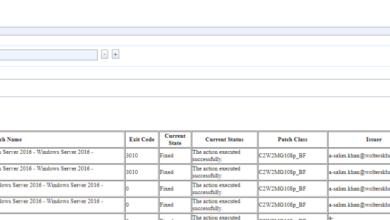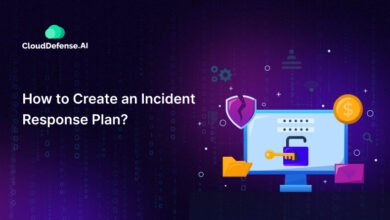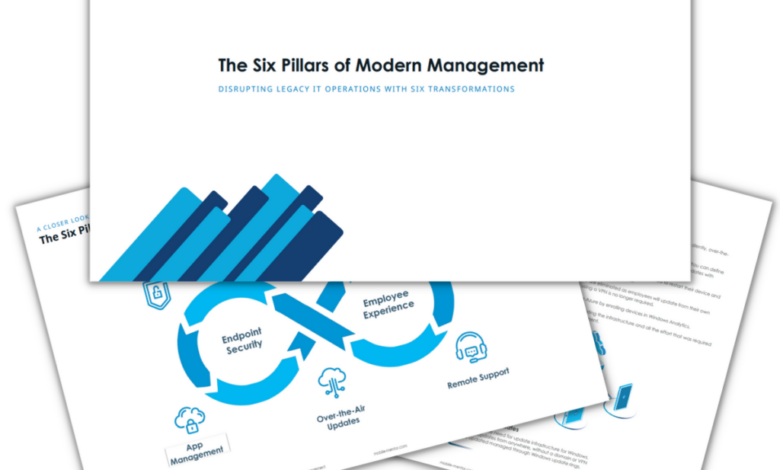
What is Autonomous Endpoint Management Best Practices and Use Cases?
What is autonomous endpoint management best practices and use cases? That’s the burning question we’re tackling today! In a world increasingly reliant on interconnected devices, securing and managing endpoints is no longer a simple task. Traditional methods are struggling to keep up with the sheer volume and complexity of modern IT environments. Enter Autonomous Endpoint Management (AEM), a game-changer promising to revolutionize how we handle endpoint security and management.
We’ll dive into the core components, explore practical best practices, and examine real-world use cases across various industries to show you exactly why AEM is becoming indispensable.
This post will explore the benefits of AEM compared to legacy systems, looking at cost savings, improved security posture, and increased operational efficiency. We’ll cover the implementation process, addressing potential challenges and highlighting strategies for successful adoption. Think of this as your comprehensive guide to understanding and leveraging the power of AEM for a more secure and streamlined IT infrastructure.
Defining Autonomous Endpoint Management (AEM)

Autonomous Endpoint Management (AEM) represents a significant evolution in endpoint security and management. It moves beyond traditional, reactive approaches to a proactive, self-healing model that leverages AI and machine learning to automate many of the complex tasks involved in securing and managing endpoints across an organization. This allows IT teams to focus on strategic initiatives rather than being bogged down in repetitive, manual processes.
Core Components of AEM
AEM systems typically incorporate several key components working in concert. These include advanced threat detection and response capabilities, automated patch management, self-healing remediation, and robust analytics and reporting. The precise composition varies depending on the vendor and specific solution, but these core elements are fundamental to the AEM approach. For instance, a core component might involve AI-driven anomaly detection that identifies suspicious activity on endpoints, automatically quarantining affected systems and initiating remediation actions without human intervention.
Another crucial element is the continuous monitoring and assessment of endpoint security posture, providing real-time insights into vulnerabilities and potential threats.
Benefits of AEM Compared to Traditional Endpoint Management
Traditional endpoint management often relies heavily on manual processes, scripting, and reactive responses to security incidents. This approach is time-consuming, error-prone, and struggles to keep pace with the ever-increasing sophistication of cyber threats. AEM offers several key advantages. Firstly, it significantly reduces the workload on IT teams by automating many routine tasks, freeing them to focus on higher-value activities.
Secondly, it improves security posture by proactively identifying and mitigating threats before they can cause damage. Thirdly, it enhances operational efficiency by streamlining processes and reducing the time required to resolve security incidents. Finally, AEM provides better visibility into the endpoint environment, allowing for more informed decision-making and improved risk management.
Comparison of AEM Solutions
The AEM market is becoming increasingly competitive, with several vendors offering solutions with varying features and capabilities. The choice of the right AEM solution depends on several factors, including the size and complexity of the organization, its specific security needs, and its budget. Below is a comparison of some prominent AEM solutions, though this is not an exhaustive list and the market is constantly evolving.
| Vendor | Key Features | Pricing Model | Target Audience |
|---|---|---|---|
| Vendor A (Example: Microsoft Intune) | Unified endpoint management, conditional access, mobile device management, threat protection, automated remediation | Subscription-based, tiered pricing | Mid-sized to large enterprises |
| Vendor B (Example: VMware Workspace ONE) | Digital workspace platform, endpoint management, application management, security, analytics | Subscription-based, tiered pricing | Mid-sized to large enterprises |
| Vendor C (Example: CrowdStrike Falcon) | Next-generation antivirus, endpoint detection and response (EDR), threat intelligence, automated investigation and remediation | Subscription-based, per-endpoint pricing | Organizations of all sizes with a focus on advanced threat protection |
| Vendor D (Example: SentinelOne) | AI-powered endpoint protection, autonomous response, threat hunting, vulnerability management | Subscription-based, per-endpoint pricing | Organizations of all sizes seeking autonomous security solutions |
Best Practices for Implementing AEM
Successfully implementing Autonomous Endpoint Management (AEM) requires a strategic approach that prioritizes security, robust patching, and a well-defined rollout plan. Ignoring these aspects can lead to vulnerabilities and hinder the realization of AEM’s full potential. This section Artikels best practices to ensure a smooth and secure transition to AEM.
Securing Endpoints Using AEM
AEM’s strength lies in its ability to proactively identify and mitigate threats. Effective endpoint security within an AEM framework involves several key components. First, a strong foundation of security policies is crucial. These policies should define acceptable use, access controls, and data protection measures. Secondly, continuous monitoring and threat detection are essential.
AEM systems should leverage AI and machine learning to identify anomalies and potential breaches in real-time, enabling rapid response and remediation. Finally, integrating AEM with other security tools, such as Security Information and Event Management (SIEM) systems, enhances overall visibility and strengthens the organization’s security posture. This integrated approach allows for a holistic view of the security landscape and facilitates proactive threat management.
Robust Patch Management Within an AEM Framework
Automated patch management is a cornerstone of effective AEM. Delayed or incomplete patching leaves endpoints vulnerable to known exploits. AEM should automate the entire patch lifecycle, from vulnerability identification and prioritization to deployment and verification. This includes incorporating vulnerability scanning tools to regularly assess the security posture of each endpoint. Furthermore, the AEM system needs to intelligently manage patching schedules, minimizing disruption to end-users while ensuring timely application of critical updates.
The system should also include robust rollback mechanisms in case of unforeseen issues. This automated and streamlined approach ensures that endpoints remain up-to-date with the latest security patches, significantly reducing the attack surface.
Phased Rollout Plan for AEM Implementation
Implementing AEM in a medium-sized organization requires a phased approach to minimize disruption and ensure successful adoption. A typical rollout might span six months, with distinct phases focusing on different aspects of implementation.
| Phase | Timeline | Milestones |
|---|---|---|
| Phase 1: Assessment & Planning | Month 1 | Define scope, identify stakeholders, select AEM solution, conduct a security audit of existing infrastructure. |
| Phase 2: Proof of Concept (POC) | Month 2 | Implement AEM in a pilot environment (e.g., a small department), test key features, gather feedback. |
| Phase 3: System Integration & Configuration | Month 3-4 | Integrate AEM with existing IT infrastructure, configure policies and settings, develop training materials. |
| Phase 4: Deployment & User Training | Month 5 | Roll out AEM to the rest of the organization, provide comprehensive user training. |
| Phase 5: Monitoring & Optimization | Month 6 and ongoing | Monitor AEM performance, fine-tune configurations, gather feedback for continuous improvement. |
The Role of Automation and AI in Optimizing AEM Processes, What is autonomous endpoint management best practices and use cases
Automation and AI are integral to the success of AEM. AI-powered threat detection and response capabilities significantly enhance security posture. Machine learning algorithms can analyze vast amounts of data to identify patterns and anomalies indicative of malicious activity, enabling proactive threat mitigation. Automation streamlines tasks such as patch management, software deployment, and vulnerability remediation, reducing the workload on IT staff and improving efficiency.
For example, AI can prioritize patching based on the severity of vulnerabilities and the criticality of affected systems, ensuring that the most urgent issues are addressed first. This optimized approach minimizes risk and maximizes the effectiveness of AEM.
Use Cases for AEM across Different Industries: What Is Autonomous Endpoint Management Best Practices And Use Cases
Autonomous Endpoint Management (AEM) isn’t just a buzzword; it’s a game-changer for organizations struggling with the complexities of managing a sprawling network of endpoints. Its ability to automate tasks, improve security, and reduce operational costs makes it incredibly valuable across a range of industries. Let’s explore some key examples.
AEM in Healthcare
The healthcare sector faces unique challenges, including stringent regulatory compliance (HIPAA), a diverse range of devices, and a constant threat of cyberattacks targeting sensitive patient data. AEM offers a powerful solution to these problems. By automating endpoint patching, vulnerability management, and security configuration, AEM significantly strengthens the security posture while simultaneously reducing the burden on already stretched IT teams.
The benefits of AEM in healthcare are multifaceted:
- Reduced Risk of Data Breaches: Automated patching and vulnerability management minimize the window of opportunity for attackers, significantly reducing the risk of ransomware attacks and data breaches. For example, AEM can automatically patch known vulnerabilities in medical imaging equipment before malicious actors can exploit them.
- Improved Compliance with HIPAA: AEM’s automated audit trails and reporting capabilities help organizations demonstrate compliance with HIPAA’s stringent security and privacy rules. This simplifies audits and reduces the risk of penalties.
- Enhanced Operational Efficiency: Automation frees up IT staff to focus on strategic initiatives instead of manual endpoint management tasks, such as software deployment and updates. This translates to cost savings and improved response times to critical issues.
- Streamlined Device Management: AEM can efficiently manage a heterogeneous environment of devices, including desktops, laptops, mobile devices, and medical equipment, ensuring consistent security policies and updates across all endpoints.
AEM in Financial Services
The financial services industry operates under intense regulatory scrutiny, with strict compliance requirements like GDPR and others demanding rigorous data protection and security measures. AEM plays a crucial role in meeting these demands. By automating security policies and enforcing consistent configurations across all endpoints, AEM helps financial institutions mitigate risks and ensure compliance.
Specific examples of AEM’s impact on the financial services sector include:
- Strengthened Data Security: Automated encryption, access control, and data loss prevention (DLP) measures safeguard sensitive customer and financial data, reducing the risk of fraud and data breaches. For instance, AEM can automatically encrypt all sensitive data on laptops used by employees working remotely.
- Simplified Compliance Reporting: AEM’s automated reporting and audit capabilities simplify compliance with regulations such as GDPR, providing evidence of adherence to data protection standards and reducing the time and resources spent on compliance audits.
- Reduced Operational Costs: Automation reduces the need for manual intervention, freeing up IT staff to focus on higher-value tasks and lowering the overall cost of endpoint management.
AEM in Manufacturing
In the manufacturing sector, uptime is paramount. Even short periods of downtime can result in significant financial losses. AEM helps improve productivity and reduce downtime by proactively managing endpoint security and ensuring the smooth operation of critical systems.
Case Study: Acme Manufacturing
Acme Manufacturing, a large automotive parts supplier, implemented AEM to address escalating endpoint management challenges and improve operational efficiency. Prior to AEM implementation, manual patching and software updates frequently caused disruptions to production lines. Following AEM deployment, Acme experienced a significant reduction in downtime. Automated patching and vulnerability management reduced the occurrence of system failures, minimizing production line interruptions.
Moreover, AEM’s remote management capabilities allowed IT staff to quickly resolve endpoint issues, even on the factory floor, further reducing downtime. The improved efficiency translated to a measurable increase in productivity and a significant reduction in operational costs. Acme’s ROI from AEM implementation was substantial, demonstrating the technology’s value in optimizing manufacturing operations.
Challenges and Considerations in AEM Adoption
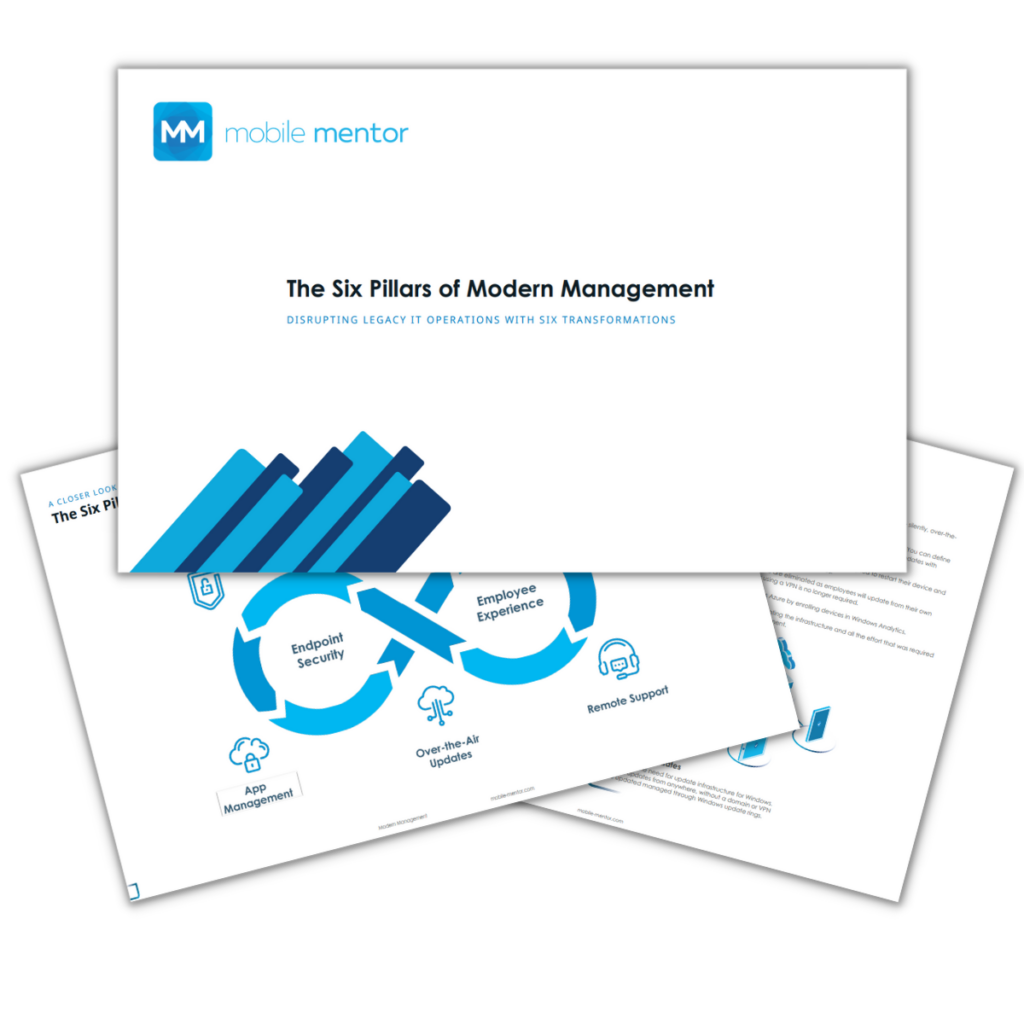
Embracing Autonomous Endpoint Management (AEM) promises significant benefits, but the journey isn’t without its hurdles. Successful implementation requires careful planning, resource allocation, and a proactive approach to mitigating potential risks. Ignoring these challenges can lead to project delays, budget overruns, and even compromise the security of your endpoints.AEM adoption presents a unique set of challenges, primarily stemming from the inherent complexity of managing diverse endpoints across various environments.
These complexities extend beyond simply integrating the AEM solution itself, encompassing issues of data security, staff training, and the ongoing need for adaptation and optimization. Understanding these potential roadblocks is crucial for a smooth and effective transition.
Integration Complexities
Integrating AEM with existing security infrastructure and diverse endpoint environments can be a significant undertaking. Legacy systems may lack the necessary APIs or compatibility, requiring custom integrations or costly upgrades. For example, integrating AEM with a legacy SIEM (Security Information and Event Management) system might necessitate developing custom connectors to ensure seamless data flow and correlation. This process can be time-consuming and resource-intensive, demanding specialized skills and careful planning.
Furthermore, ensuring compatibility across different operating systems, applications, and cloud platforms adds further layers of complexity.
Skills Gaps
Successfully implementing and managing AEM requires a specialized skillset. Organizations may lack internal expertise in areas such as AI/ML-driven security, cloud-based endpoint management, and data analytics. This skills gap can hinder the effective deployment, optimization, and ongoing management of the AEM solution. Finding and retaining qualified personnel with these specialized skills is a challenge, often requiring significant investment in training and recruitment.
This is particularly true for smaller organizations that may not have the resources to compete with larger enterprises for talent.
Data Loss and Security Breaches
AEM solutions rely on the collection and analysis of large volumes of endpoint data. This raises concerns about data loss and potential security breaches. Robust data backup and recovery mechanisms are essential, along with stringent access controls and data encryption to mitigate these risks. A failure to adequately address these concerns can lead to significant financial and reputational damage.
For instance, a breach exposing sensitive customer data could result in hefty fines and legal action, not to mention the loss of customer trust.
Managing Endpoint Security in a Hybrid Cloud Environment
Managing endpoint security in a hybrid cloud environment adds another layer of complexity. Different cloud providers offer varying levels of security features and integration capabilities. AEM needs to seamlessly manage endpoints across on-premises, private cloud, and public cloud environments, ensuring consistent security policies and enforcement. This requires a unified security management platform that can orchestrate security controls across all environments.
Different approaches, such as using a centralized security management platform with agent-based security or a cloud-native security approach, need to be carefully evaluated based on the organization’s specific needs and infrastructure.
Essential Considerations Before Implementing AEM
Before embarking on an AEM implementation, a comprehensive checklist should be reviewed. This checklist ensures a well-informed decision and mitigates potential issues.
- Assess Current Infrastructure: Thoroughly evaluate your existing IT infrastructure, including endpoint devices, network architecture, and security tools. Identify any compatibility issues or gaps that need to be addressed before implementing AEM.
- Define Clear Objectives: Clearly define your goals for AEM implementation. What specific problems are you trying to solve? What key performance indicators (KPIs) will you use to measure success?
- Choose the Right Vendor: Select an AEM vendor that aligns with your specific needs and requirements. Consider factors such as scalability, integration capabilities, and customer support.
- Develop a Comprehensive Implementation Plan: Create a detailed plan that Artikels all phases of the implementation, including timelines, resource allocation, and risk mitigation strategies.
- Invest in Training and Support: Provide adequate training to your IT staff to ensure they can effectively manage and maintain the AEM solution. Secure ongoing support from the vendor to address any issues that may arise.
- Establish Robust Security Policies: Implement robust security policies to protect sensitive data and prevent unauthorized access. This includes data encryption, access controls, and regular security audits.
- Plan for Ongoing Monitoring and Optimization: AEM is not a “set it and forget it” solution. Continuous monitoring and optimization are crucial to ensure the system remains effective and efficient over time.
The Future of Autonomous Endpoint Management
Autonomous Endpoint Management (AEM) is rapidly evolving, driven by advancements in artificial intelligence, the growing importance of zero-trust security, and the ever-expanding landscape of remote work. The future of AEM promises significantly improved efficiency, enhanced security postures, and greater flexibility for organizations of all sizes. This section explores key trends shaping this exciting future.
AI and Machine Learning in AEM
AI and machine learning are revolutionizing AEM by enabling proactive threat detection and response. Instead of relying solely on reactive measures, AEM systems are increasingly leveraging AI to analyze vast amounts of endpoint data, identifying anomalies and potential threats in real-time. This allows for automated remediation of vulnerabilities before they can be exploited. For example, an AEM system powered by AI could detect unusual network activity on a specific endpoint, automatically isolate it from the network, and initiate a malware scan, all without human intervention.
This proactive approach minimizes downtime and reduces the risk of data breaches. Furthermore, machine learning algorithms continuously learn and adapt, improving their accuracy and effectiveness over time. This continuous learning ensures that the AEM system remains effective against evolving threats.
Zero-Trust Security and AEM Strategies
The adoption of zero-trust security models is fundamentally changing how organizations approach endpoint security. Zero trust assumes no implicit trust, verifying every user and device before granting access to resources. AEM plays a crucial role in implementing zero trust by continuously monitoring and assessing the security posture of each endpoint. AEM systems can enforce strict access control policies, ensuring that only authorized users and devices can access sensitive data.
For instance, an AEM system could deny access to a corporate network from an endpoint that hasn’t completed the required security checks, such as multi-factor authentication and up-to-date antivirus software. This granular control minimizes the impact of potential breaches, even if a single endpoint is compromised.
AEM and the Rise of Remote Work and BYOD
The widespread adoption of remote work and Bring Your Own Device (BYOD) policies has significantly increased the complexity of endpoint management. AEM offers a scalable and efficient solution to manage the diverse range of endpoints now accessing corporate resources. AEM systems can automatically enforce security policies, update software, and monitor the health of endpoints, regardless of their location or ownership.
This ensures consistent security and compliance across all endpoints, simplifying management for IT teams. For example, an AEM system could automatically deploy security patches to all company-owned and employee-owned devices, ensuring that all endpoints are protected against the latest threats, regardless of their physical location. This automation drastically reduces the burden on IT staff, allowing them to focus on more strategic initiatives.
AEM in a Future Workplace Scenario
Imagine a future where a large financial institution seamlessly manages thousands of endpoints across various locations and operating systems. Their AEM system, powered by AI and machine learning, proactively identifies and mitigates threats before they can cause damage. Employees can work securely from anywhere, using their personal devices without compromising security. The AEM system automatically enforces security policies, updates software, and ensures compliance with industry regulations.
In the event of a security incident, the AEM system automatically isolates the affected endpoint and initiates a recovery process, minimizing downtime and data loss. This scenario highlights the efficiency and enhanced security provided by AEM, leading to improved productivity and reduced operational costs. The organization benefits from a streamlined, secure, and flexible IT infrastructure that adapts to the ever-changing needs of the modern workplace.
This scenario showcases how AEM can transform IT operations, freeing up valuable resources and enabling organizations to focus on innovation and growth.
Concluding Remarks
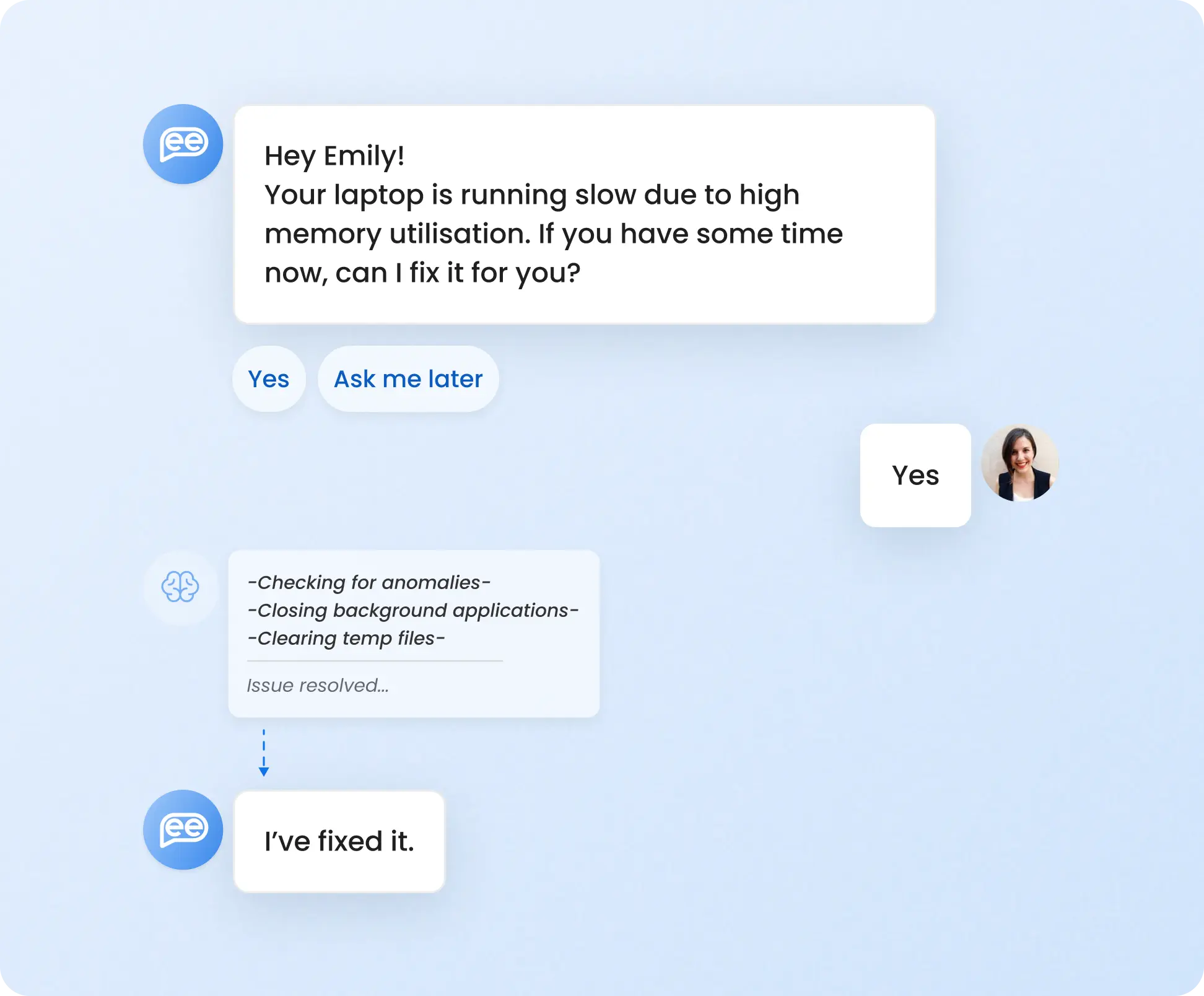
So, there you have it – a deep dive into the world of Autonomous Endpoint Management! From understanding its core principles and best practices to exploring its diverse applications across various sectors, we’ve covered a lot of ground. The key takeaway? AEM isn’t just a trend; it’s a necessity for organizations looking to navigate the complexities of modern IT landscapes effectively.
By embracing automation, AI, and proactive security measures, businesses can significantly reduce their attack surface, enhance operational efficiency, and achieve a stronger security posture. Ready to embark on your AEM journey? The future of endpoint management is here, and it’s autonomous.
FAQ Explained
What are the biggest risks associated with implementing AEM?
The biggest risks include potential integration complexities, skills gaps within the IT team, and the risk of data loss or security breaches if not properly implemented and monitored. Careful planning and a phased rollout are crucial.
How does AEM differ from traditional endpoint management?
Traditional endpoint management relies heavily on manual processes and reactive responses. AEM leverages automation, AI, and machine learning to proactively identify and address threats, automate tasks, and provide a more efficient and scalable solution.
Is AEM suitable for small businesses?
While AEM solutions can be scaled to fit different sizes of organizations, smaller businesses might find the initial investment and complexity challenging. They should carefully assess their needs and budget before adopting AEM.
What kind of training is needed for AEM implementation?
Training needs vary depending on the chosen AEM solution and the existing IT team’s skills. However, training on the specific AEM platform, security best practices, and incident response procedures is essential.
